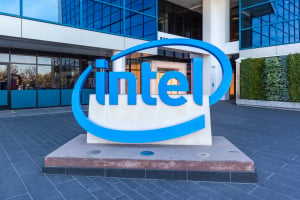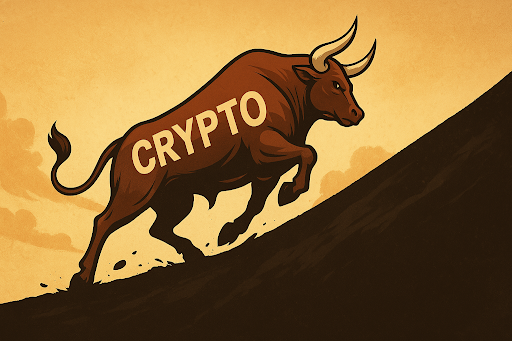While proof of stake (PoS) becomes the dominant type of consensus for blockchains, proof of work still remains the basis for many of the largest cryptocurrencies, including Bitcoin (BTC), Litecoin (LTC) and Dogecoin (DOGE).
That is why understanding the concept of cryptocurrency mining is essential for researching opportunities for income in cryptocurrency in 2025.
In this guide, U.Today gives an overview of the status of the cryptocurrency mining segment in 2025 and indicates top Bitcoin (BTC) mining pools for newcomers and pros.
Best crypto mining pools in 2025: Highlights
A cryptocurrency mining pool is an entity (group of miners) working together to solve cryptographic puzzles and compete against rivals in the process of crypto mining.
- Cryptocurrency mining refers to the process of finding (solving) hashes for the next block in cryptocurrencies based on the proof-of-work (PoW) consensus.
- While staking in proof of stake (PoS) blockchains is considered to be a more eco-friendly and democratic process, mining is much more difficult to censor and attack.
- After Ethereum's (ETH) migration to proof of stake (PoS) in September 2022, Bitcoin (BTC), Litecoin (LTC), Dogecoin (DOGE), Monero (XMR) and Kaspa (KAS) remain the largest PoW cryptocurrencies.
- A cryptocurrency mining pool is a conglomerate of miners collaborating to solve cryptographic puzzles in order to find the next block of this or that chain.
- Compared to solo miners, mining in pools unlocks more opportunities for finding the block but, at the same time, comes with the necessity to share rewards.
Foundry USA Pool, Antpool, EMCD, Braiins Pool and Binance Pool are among the most popular and influential cryptocurrency mining pools in 2025.
Top crypto mining pools: Ranking
In 2025, these cryptocurrency mining pools are best based on multiple indicators:
1. Foundry USA Pool
2. EMCD
3. Antpool
4. Braiins Pool
5. Binance Pool
All of them offer diverse mining programs, support a variety of Proof-of-Work cryptos and extra features for miners.
Top 5 cryptocurrency mining pools in 2025: Overview
Now we will look at the biggest and most credible cryptocurrency mining pools for various cryptos.
Foundry USA Pool
Foundry USA Pool
![]()
-
Launched in:
Q4, 2015
-
Main business:
Bitcoin mining pool
-
Blockchains:
Bitcoin
-
Registration:
USA
Foundry USA Pool is the biggest and most influential Bitcoin (BTC) mining pool globally. It is one of the largest U.S.-registered crypto businesses. Foundry USA Pool is focused on institutional participants, and fully regulatory-compliant and secure multiple tech architecture audits.
Mike Colyer, Barry Silbert
Mining pool, mining software platform
Participants in the Foundry USA Pool are responsible for one of three new Bitcoins (BTC) mined on the network.
Managed by Foundry, a subsidiary of Digital Currency Group (DCG), Foundry USA Pool launched in October 2020. With a heavy focus on institutions, Foundry USA Pool is the most influential pool for the global Bitcoin (BTC) mining ecosystem.
As of June 2025, it is responsible for 273.9 EH/s, or about one third of the global Bitcoin (BTC) hashrate. Simply put, this means that one out of three hashes mined on the Bitcoin (BTC) network is solved by a participant in the Foundry USA Pool.
Foundry USA Pool offers an FPPS payout mode for every contributor. It also maintains industry-level SOC compliance and KYC for Bitcoin (BTC) mining pool members. Foundry USA Pool is a U.S.-compliant company with tiered account permissions and fully transparent tax and accounting data.
Foundry, the operator of this pool, is also the developer of Foundry Optifleet, Bitcoin (BTC) mining resource management software for maximum efficiency and security of mining operations.
EMCD
EMCD
![]()
-
Launched in:
Q4, 2018
-
Main business:
Bitcoin mining pool
-
Blockchains:
Bitcoin
-
Registration:
Singapore
EMCD is one of the most influential Bitcoin (BTC) mining pools globally. Over seven years of operations, it amassed a more than 22 EH/s hashrate and onboarded 400,000+ clients to its BTC mining pool.
Crypto wallet, crypto deposits with 14% APY, P2P exchange
With over 1,200 Bitcoins (BTC) mined in total, EMCD clients are responsible for 2% of all new Bitcoins (BTC) on the network.
EMCD is a crypto platform based on one of the 10 largest Bitcoin (BTC) mining pools operating since 2018. Helmed by cryptocurrency veteran Michael Jerlis, the Singapore-headquartered pool delivers comprehensive cryptocurrency mining pool services to over 400,000 individual and corporate clients worldwide.
 Image by EMCD
Image by EMCDIn over seven years of operations, EMCD’s participants managed to mine over 1,200 Bitcoins (BTC). In the corresponding period, that means that over 2% of every Bitcoin (BTC) added to the circulation supply was mined by an EMCD miner. The sophisticated tech architecture tailored for maximum resource efficiency allowed EMCD to hit a whopping 22.1 EH/s of aggregate hashrate.
As of press time, according to public tracking resources, EMCD is among the top 10 most influential Bitcoin (BTC) mining pools in the world.
EMCD mining services are integrated with a feature-rich ecosystem of applications to ensure a holistic experience for every customer regardless of their contribution. EMCD is seamlessly integrated with Coinhold, a one-stop app for digital money. Coinhold allows secure, fast and cost-effective holding, storing, exchanging and trading of cryptocurrencies. It also offers up to 14% APY on cryptocurrency deposits, which is much better than market benchmarks for centralized services.
EMCD is also running one of the most vibrant and active peer-to-peer exchange services on the market, allowing crypto holders to exchange their assets with zero fees.
Antpool
Antpool
![]()
-
Launched in:
Q2, 2014
-
Main business:
Multi-blockchain
-
Blockchains:
Bitcoin, Bitcoin Cash, Litecoin, Ethereum Classic, ZCash and others
-
Registration:
China
Launched by Bitmain in 2014, Antpool is the biggest Asian multi-blockchain mining pool. It supports all mainstream proof-of-work (PoW) cryptocurrencies and is integrated with the infrastructure of Ant, a digital Chinese heavyweight.
Hardware shop, crypto deposit platform, transaction accelerator, cloud mining platform.
Antpool is a product of Bitmain, a Chinese crypto mining hardware producer known for its industry-leading mining computers (ASICs), Antminers.
Founded by Bitcoin (BTC) mining hardware heavyweight Bitmain in 2014, Antpool is the second most influential BTC mining entity in the world. Roughly, it controls over 20% of the aggregated Bitcoin (BTC) network hashrate, solving 172.3 EH/s.
Antpool offers the widest ranges of cryptocurrencies to mine, including Bitcoin (BTC), Bitcoin Cash (BCH), Litecoin (LTC), Ethereum Classic (ETC), Zcash (ZEC) and Kadena (KDA).
Antpool is integrated with an industry-level ecosystem of crypto services, including ANTPOOL BAO, a tool for reinvesting of mining rewards, and Antpool Shop, the world’s biggest second hand store for mining equipment, plus a fixed Incomi crypto deposit service with 0.6-0.8% APY in Bitcoin (BTC) and a popular cloud mining platform for newbie-level users.
Antpool also offers a Bitcoin (BTC) transaction accelerator, a sophisticated instrument for transaction reprioritization in the BTC mempool. Not unlike Foundry USA Pool, Antpool adheres to SOC and AICPA security standards and certification policies.
Braiins Pool
Braiins Pool
![]()
-
Launched in:
Q4, 2010
-
Main business:
Bitcoin mining pool
-
Blockchains:
Bitcoin
-
Registration:
Czech Republic
Launched in 2010 by Bitcoin (BTC) enthusiast Marek “Slush” Palantinus, Braiins Pool initially operated as Slush Pool and Bitcoin.cz Mining Pool. It is the first commercial cryptocurrency mining pool in existence, pioneering implementation of the concept itself.
Hardware shop, educational platform, proxy service
Braiins Pool remains one of the oldest EU-registered cryptocurrency businesses and the most credible name in the cryptocurrency mining pools segment.
Braiins Pool, initially known as Bitcoin.cz Mining Pool and later Slush Pool, has been operating since December 2010. Launched by Marek "Slush" Palatinus in Prague, Czech Republic, Braiins Pool is one of the oldest cryptocurrency businesses in the world and the most reputable Bitcoin (BTC) mining pool. It has been working under its current name since 2022.
Currently, Braiins Pool is responsible for 12.30 EH per second, which is among the top 10 most influential Bitcoin (BTC) mining pools globally. In total, since its launch in 2010, Braiins Pool mined almost 1.3 million BTC.
Braiins Pool leverages the FPPS rewards scheme with seamless API access and one-click export of all tax and legal documents via its API. Contributors can operate their hashrate clusters via dedicated mobile applications. As of June 2025, Braiins Pool delivers its services to 10,800 customers across the globe, operating 90,000 mining rigs of all recent generations.
Binance Pool
Binance Pool
![]()
-
Launched in:
Q1, 2020
-
Main business:
Multi-blockchain mining pool
-
Blockchains:
Bitcoin, Bitcoin Cash, Ethereum Classic, Dash and so on
-
Registration:
N/A
Binance Pool is one of the youngest mainstream cryptocurrency mining pools. It launched amid the 2020-2021 bull run. It offers seamless access to pooled mining for dozens of blockchains and services within the Binance ecosystem.
100+ Binance crypto exchange services
To start mining with Binance Pool, one needs to set up a Binance (BNB) crypto exchange account and pass KYC checks on the platform.
Binance Crypto Mining Pool, an integral element of the world’s biggest cryptocurrency ecosystem Binance (BNB), supports proof-of-work (PoW) mining operations for Bitcoin (BTC), Bitcoin Cash (BCH), Litecoin (LTC), Ethereum Classic (ETC), ZCash (ZEC), Revencoin (RVN), Nervos Network (CKB), Kaspa (KAS) and Conflux (CFX).
With 66.33 Eh/s, Binance Pool is responsible for 7% of the global Bitcoin (BTC) mining hashrate. Binance Pool is well known for its straightforward interface, clear UX/UI and the biggest collection of integrations.
With the Super Mine campaign, contributors to the service can boost their rewards. Also, Binance Crypto Mining Pool allows full transparency and tracking of all of its 250,000+ workers (mining computers) across all supported networks. Also, the pool by Binance (BNB) supports a powerful transaction accelerator for Bitcoin's (BTC) blockchain mempool.
What is cryptocurrency mining?
In cryptocurrency, mining refers to the process of adding the next block to the blockchain via solving cryptographic puzzles. All computers on the network compete against each other to solve the puzzle first and “mine” the hash of the upcoming block. For doing so, the luckiest miners get periodic rewards every block.
While initially, cryptocurrency mining was available on entry-level computers — desktop and even laptops — in 2025, you can mine mainstream cryptocurrency only on sophisticated miners based on application-specific integrated circuits (ASICs).
You Might Also Like

Thus, cryptocurrency miners secure the networks and keep them operable by investing their computational resources. This type of consensus is called “proof of work.” It laid the foundation for the entire concept of blockchain with the inception of Bitcoin (BTC) in 2009.
Mining versus staking: Key differences
Mining and staking represent two ways of contributing to the operations of a blockchain network; proof-of-work blockchains rely on miners, while proof-of-stake blockchains rely on stakers.
- In proof-of-work blockchains, miners participate with their computational power, they install and maintain powerful computers and compete against each other to solve cryptographic puzzles.
- On proof-of-stake blockchains, stakers contribute their crypto deposit (stakes) to blockchain nodes. Stakes are pledged as collateral for proper behavior and a guarantee of participation in network security.
Staking is less resource efficient, while mining is battle-tested and extremely difficult to attack. Also, mining consumes a large volume of electricity and is more whale-dominated thanks to high barriers to entry.
Best cryptocurrency to mine in 2025
Despite the majority of cryptocurrencies moving to the proof-of-stake consensus, the mining of some proof-of-work coins remains profitable in 2025.
Bitcoin (BTC)
Bitcoin (BTC) is the first-ever cryptocurrency and the largest digital asset by market capitalization. Bitcoin (BTC) was invented by anonymous developer Satoshi Nakamoto and launched in 2009. The “orange coin” was the first realization of the cryptocurrency concept as such.
Bitcoin (BTC) is also the most popular and expensive cryptocurrency. In May 2025, it set a new price record north of $110,000 per coin. Bitcoin (BTC) is accessible to both retail and institutional traders as it is included in spot ETFs in the U.S.
Bitcoin (BTC) has the largest mining ecosystem; its miners create 900 Ehashes (quintillions of hashes) per second.
Litecoin (LTC)
Litecoin (LTC) is an alternative cryptocurrency (altcoin) created by Charlie Lee, a former Google engineer. Litecoin (LTC) forked from Bitcoin (BTC) in Q4, 2011. Designed as a "lite" version of Bitcoin, it offers faster transaction times and lower fees.
You Might Also Like

Litecoin uses the Scrypt hashing algorithm, which is more memory-intensive and was originally intended to be ASIC-resistant, promoting more decentralized mining. It operates on a proof-of-work (PoW) consensus mechanism, similar to Bitcoin. With a block time of 2.5 minutes and a maximum supply of 84 million coins, Litecoin aims to be a faster and more convenient version of the first cryptocurrency.
Dogecoin (DOGE)
Dogecoin, the largest meme cryptocurrency, was created by Billy Markus and Jackson Palmer as a semi-ironic alternative to “serious” cryptos like Bitcoin (BTC) and Litecoin (LTC). It was launched Dec. 6, 2013, and featured the popular early 2010s Shiba Inu "Doge" meme, a phenomenon of internet culture.
Originally started as a joke, Dogecoin quickly gained a strong online community and real-world use. It also utilizes the Scrypt hashing algorithm and operates on a proof-of-work (PoW) consensus mechanism. Unlike Bitcoin, Dogecoin has no maximum supply, making it inflationary by design. In 2021, Dogecoin (DOGE) became extremely popular thanks to support from Elon Musk.
Kaspa (KAS)
Kaspa (KAS) is a high‑performance layer-1 cryptocurrency launched on Nov. 7, 2021, with no ICO or premine.
You Might Also Like

Kaspa (KAS) was created by a community led by Yonatan Sompolinsky (known for the GhostDAG protocol). Kaspa leverages the kHeavyHash algorithm for proof‑of‑work (PoW) mining.
Unlike traditional chains, Kaspa operates via a blockDAG/GhostDAG consensus, allowing multiple blocks per second and near‑instant (~10 s) confirmations, boosting scalability while retaining PoW security.
Monero (XMR)
Monero is a privacy-focused cryptocurrency launched on April 18, 2014, by a group of anonymous developers, originally based on Bytecoin's CryptoNote protocol. It uses the RandomX algorithm.
Monero emphasizes strong on-chain privacy through features like stealth addresses, ring signatures and confidential transactions, making all transactions untraceable and balances hidden. Its developers remain anonymous to uphold decentralization and censorship resistance. Riccardo “Fluffy Pony” Spagni is the only public key figurehead of Monero (XMR).
You Might Also Like

Due to its focus on privacy, Monero faces regulatory limitations. Some exchanges in the U.S. and EU have delisted it, and certain jurisdictions scrutinize it closely, citing concerns over illicit use.
Other notable examples of proof-of-work (PoW) cryptocurrencies with profitable mining strategies in 2025 include Bitcoin Cash (BCH), ZCash (ZEC), Ravencoin (RVN) and Ergo (ERG).
What is a cryptocurrency mining pool?
A cryptocurrency mining pool is a conglomerate of mining computers competing to solve cryptographic puzzles in a coordinated manner. Technically, it is a group (cluster) of mining hardware units involved in cryptocurrency mining.
Crypto mining pools are a decentralized and inclusive blockchain business: It allows individuals to join coordinated platforms and share rewards for every block found. Cryptocurrency mining pools are far more powerful than solo miners, i.e., individuals running isolated mining rigs (farms) themselves.
Launched in 2010, Bitcoin-specific Slush Pool was the first-ever cryptocurrency mining pool, which laid the framework for the entire business of coordinated mining.
Choosing cryptocurrency mining pool: Things to consider
While selecting a cryptocurrency mining pool for investing, one should consider the scope of algorithms this or that pool supports, its payouts scheme and integration with other cryptocurrency services.
Algorithm
Cryptocurrency mining pools use various hashing algorithms depending on the blockchain they support.
The most popular options include SHA-256 (used by Bitcoin, Bitcoin Cash), known for its high security but requiring expensive ASICs to join. Scrypt (used by Litecoin, Dogecoin) is memory-intensive, but can be run without ASICs.
Ethash (Ergo, pre-Merge Ethereum) is GPU-friendly and also memory-heavy. RandomX (used by Monero) is optimized for CPUs and resists ASICs.
KHeavyHash (used by Kaspa) is lightweight and guarantees faster block times compared to previous-gen solutions.
Other algorithms include Equihash (Zcash), X11 (Dash) and Cryptonight (older Monero versions). While selecting the algorithm, investors should consider their resources, goals and strategy specifications.
Payouts scheme
Cryptocurrency mining pools use various payout schemes to fairly distribute rewards among participants.
- FPPS (full pay-per-share) is designed to allow miners to receive a fixed reward for each valid share submitted, regardless of whether the pool finds a block. It also includes transaction fees, offering consistent payouts.
- PPS (pay-per-share) is a little bit similar to FPPS but excludes transaction fees.
- PPLNS (pay-per-last-N-shares) rewards miners based on the number of shares they contributed in the last “N” shares when a block is found.
- PROP (proportional) divides rewards based on shares submitted during a round.
Each method comes with its own pros and cons, balancing risk, fairness and predictability in various ways.
Ecosystem
While selecting cryptocurrency pools for investing, potential crypto mining pool participants should check out whether it supports necessary ecosystem tooling for comfortable, predictable and resource-effective journeys.
Element | Why would I need it? |
Built-in crypto wallet | For secure allocation of rewards |
Deposit instrument | To seamlessly enjoy yield rewards on crypto mining pool payouts |
P2P exchange | To exchange rewards for other cryptos such as BTC, ETH and USDT |
24/7 support | To solve all issues and leave feedback on operations |
All of these elements should be thoroughly researched while choosing a mining pool strategy, the amount and the term of investment.
Wrapping up: Are cryptocurrency mining pools still relevant in 2025?
A cryptocurrency mining pool is a form of proof-of-work hash mining business in which individual computers join a coordinated group to compete against rival miners. Compared to solo miners, cryptocurrency mining pools offer the greatest chances of adding the next block, but their rewards are shared between all participants.
Foundry USA Pool, Antpool, EMCD, Braiins Pool and Binance Pool are among the most influential cryptocurrency mining pools in 2025.








 English (US) ·
English (US) ·